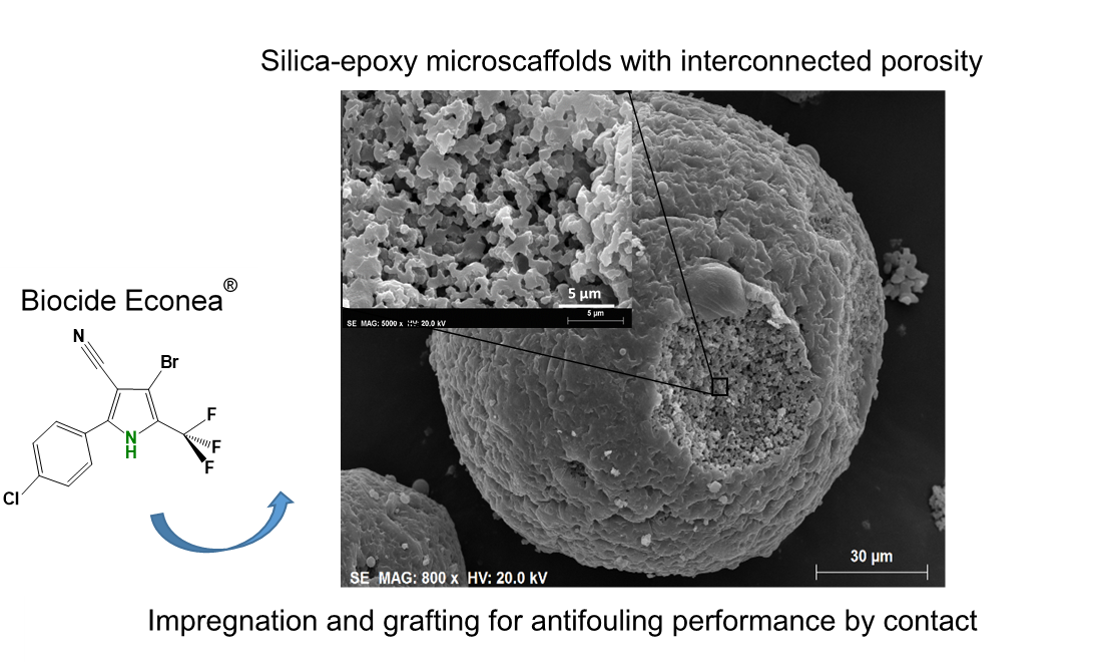
New paper released on Hybrid custom-tailored sol-gel derived microscaffold for biocides immobilization
Mónica V. Loureiro, Mário Vale, Aster De Schrijver, João C. Bordado, Elisabete Silva, Ana C. Marques, “Hybrid custom-tailored sol-gel derived microscaffold for biocides immobilization”, Microporous and Mesoporous Materials, 261 (2018) 252 – 258. DOI: https://doi.org/10.1016/j.micromeso.2017.10.056
The present paper regards the development of silica-epoxy matrices, in the form of functional spherical microscaffolds with controlled morphology, comprising an immobilized biocide, for antifouling purposes. The microscaffolds herein presented were obtained from sol–gel processing combined with a microemulsion technique, using as Si precursors, tetraethylorthosilicate (TEOS) and 3-glycidyloxy propyl trimethoxysilane (GPTMS) to be further loaded with biocide Econea®, which has been approved in 2014 by EU Regulator (BPR) as a safe biocide. Biocide immobilization is proposed to be carried out by chemical grafting mainly between the microscaffolds’ oxirane ring and the secondary amino groups of the biocide Econea®, as well as by physical entrapment within the “worm-like” morphology and multimodal pore size distribution of the microscaffolds. The presence of Econea® within the microscaffolds was confirmed by Fourier transformed infrared spectroscopy (FTIR), thermogravimetric analyses and scanning electron microscopy (SEM-EDX) and it was found to be nearly constant over the time when those are immersed in artificial seawater, while under mild agitation. The biocidal effect of the Econea® loaded silica-epoxy spherical microscaffolds was assessed by microbiological tests, exhibiting an effective activity against Staphylococcus aureus bacteria, by contact mode, even after exposure to turbulent saline water. These microscaffolds were designed for enabling a more environmental friendly anti-fouling strategy, able to combine a more efficient, long-lasting antifouling performance for water-immersed applications, together with non-toxic properties, being, therefore, a promising and attractive alternative to the actual conventional releasing strategies.